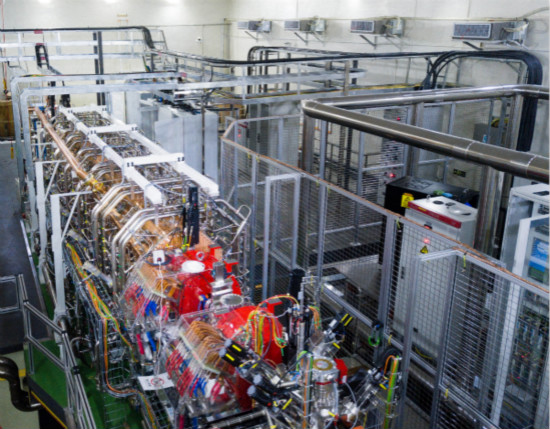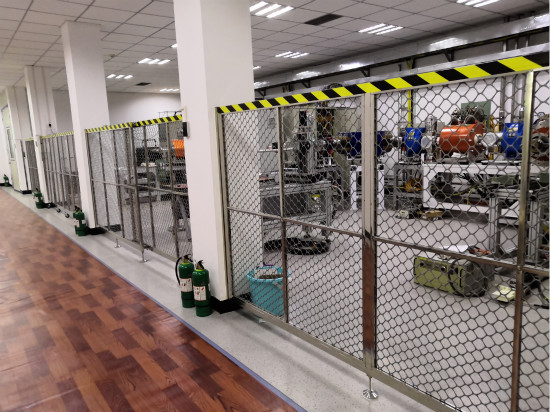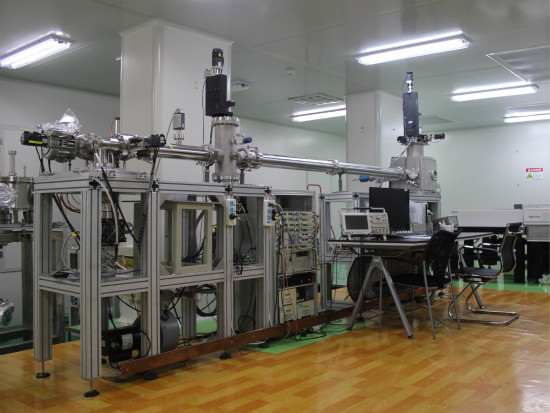Ion Sources
1. Ion Sources
(1) ECR ion sources
We have developed high performance ECR ion sources from classical to fully superconducting ones that cover the operation frequency of 10~28 GHz. Fully superconducting ion sources such as SECRAL and SECRAL-II, are iconic high performance machines that represent the state of the art ECR ion sources, which have contributed enormously to the performance enhancement of HIRFL facility and the basic researches as well. Permanent magnet ECR ion sources, the successful LAPECR series, have been widely utilized for the applications of heavy ion beams, such as multi-disciplinary platforms, cancer treatment facilities and so on. Driven by many national projects and requirements from national institutions, the group is dedicated to developing high performance ECR ion sources, key technologies as well as highly charged ECR plasma physics. The world first fourth generation ECR ion source FECR is now under development at IMP, which will challenge the limits of Nb3Sn magnet and 45 GHz microwave plasma heating for highly charged heavy ion beams production. FECR is one of the key machines of HIAF facility.
(2) Intense 2.45 GHz microwave ion source
Several high current 2.45 GHz microwave ion sources have been developed at IMP for versatile purposes, i.e. the C-ADS project injector, the CPHS project in Tsinghua University, the CMIF project at IMP, 39Ar enrichment and so on, which can provide stable ion beams of H+ or H2+ from several emA to 100 emA in both pulsed and dc modes. The Group is now focusing on the development of very compact structure sources of several cm in dimension, very powerful sources of >100 emA CW in intensity of ion beams from elements other than hydrogen, and their applications.
(3) Laser ion source and Intense beam acceleration
Laser ion sources have been being developed from 2006. With the efforts of decades, a variety of highly charged heavy ion beams, such as C5+-6+, Al9+-13+, Ti16+-20+, Ni18+-23+, Ag16+-25+, have been produced from a laser ion source equipped with commercial Nd: YAG lasers those can provide good performance for a reasonable price. The long-term stability of the laser ion source, which is of importance for applications, has been demonstrated by the IMP laser ion source. The Direct Plasma Injection Scheme- DPIS, in which a laser ion source is connected with an RFQ linac directly to take full advantage of the short-pulsed ion beams with very high intensity produce by a laser ion source, has also been studied. Based on DPIS, the C6+ beams produced by the laser ion source was accelerated by an RFQ to the energy of 7.12 MeV in the distance of 2 meters.
(4) Negative ion source and application
Since 2010, several negative ion sources have been developed at Institute of Modern Physics to provide stable DC ion beams of H-, O-, and O2- with beam intensity from hundreds of μA to several mA. These negative ion sources can be used for proton therapy facilities, secondary ion mass spectrometry and so on.
2. Experimental Platforms
(1) Low Energy Highly-Charged Ion Accelerator Facility
Nuclear science is a complex field that requires intensive study, and Low Energy Highly-Charged Ion Accelerator Facility (LEAF) was thus financing from national major scientific instruments and equipment development project and undertaken by IMP to provide a unique experimental platform. LEAF can produce highly-charged heavy ion beams of several hundred milliamperes and extend the energy range of 0.1 MeV-100 MeV for nuclear structure studies, involving Ion interaction under extreme conditions, quantum dynamics of few-body interactions in strong coulomb field, the nuclear process and the origin of heavy elements in universe evolution, as well as simulations of high-energy radiation damage in nuclear materials. In addition to producing highly-charged heavy ion beams, LEAF is designed to deliver a continuous high intensity highly-charged ion beam (e.g. Bi55+, U50+…) and a wide spectrum of high intensity cocktail beam (e.g. H2+ + He2+ + 58Ni28+…), used for testing atomic displacement damage under intense beam irradiation, and also for exploring the synergy between hydrogen and helium ions, so as to bring us discoveries and breakthroughs in science. LEAF’s research program will provide important model references for further front end construction of a new program HIAF, and will be the basis for the next generation high power heavy-ion LINACS.
LEAF platform provides technical assistance and experimental support for many research projects from National?Program?on?Key?Basic?Research?Project and National?Natural?Science?Foundation.

(2) Main Experiment Hall
The main experiment hall is located in Building 2 of IMP, and equipped with a number of experimental platforms, including research platform for application, test platform for ion source key technology, research platform for ion source/ion beam physics and experiment platform for atomic physics/materials, and research involves negative ion source, permanent magnet ion sources, highly charged ion beam production at room temperature, intense proton source and isotope enrichment. These experimental platforms provide technical assistance and experimental support for many research projects from The 13th Five-Year Science and Technology Innovation Plan, National?Program?on?Key?Basic?Research?Project, National?Natural?Science?Foundation, the CAS Key Research Program of Frontier Sciences and so on.

(3) Experiment Hall for Laser Ion Source and Accelerator
The laser ion source has the characteristics of high intensity (tens to hundreds of milliamps) and short pulse (nanoseconds to tens of nanoseconds), and is the highest brightness ion source. At the same time, it also has incomparable advantages in producing ion beams of refractory elements.
A compact injector based on a laser ion source and Direct Plasma Injection Scheme (DPIS) can meet the requirement of a single-turn single-circle injection mode of the synchrotron, which is of great significance to develop a new technical route for a compact, lower cost heavy ion therapy facility.
The laser ion source research platform is supported by the National Natural Science Funds for Excellent Young Scholars and the Key Frontier Scientific Research Project of the Chinese Academy of Sciences.



 甘公网安备 62010202000713号
甘公网安备 62010202000713号


